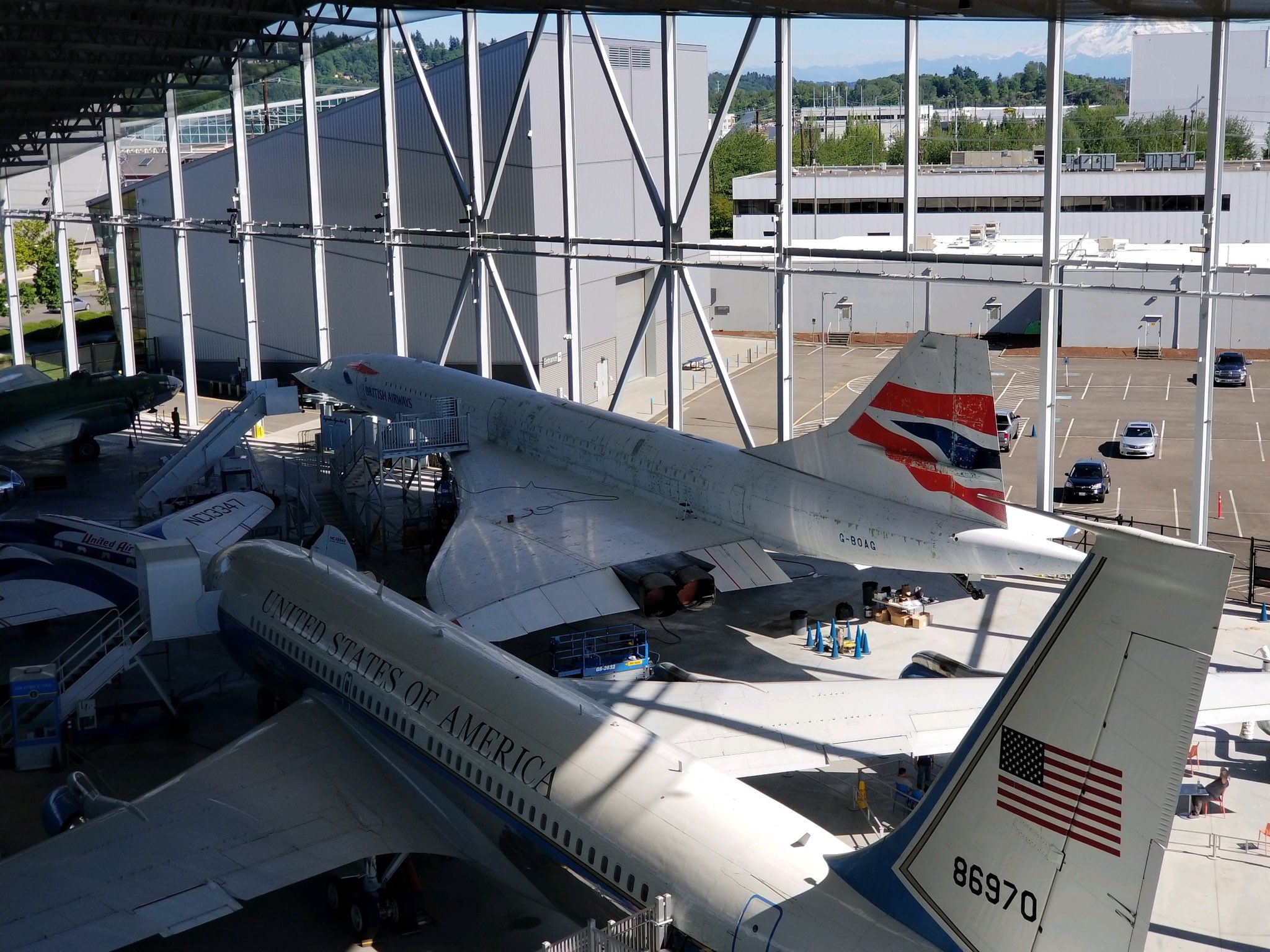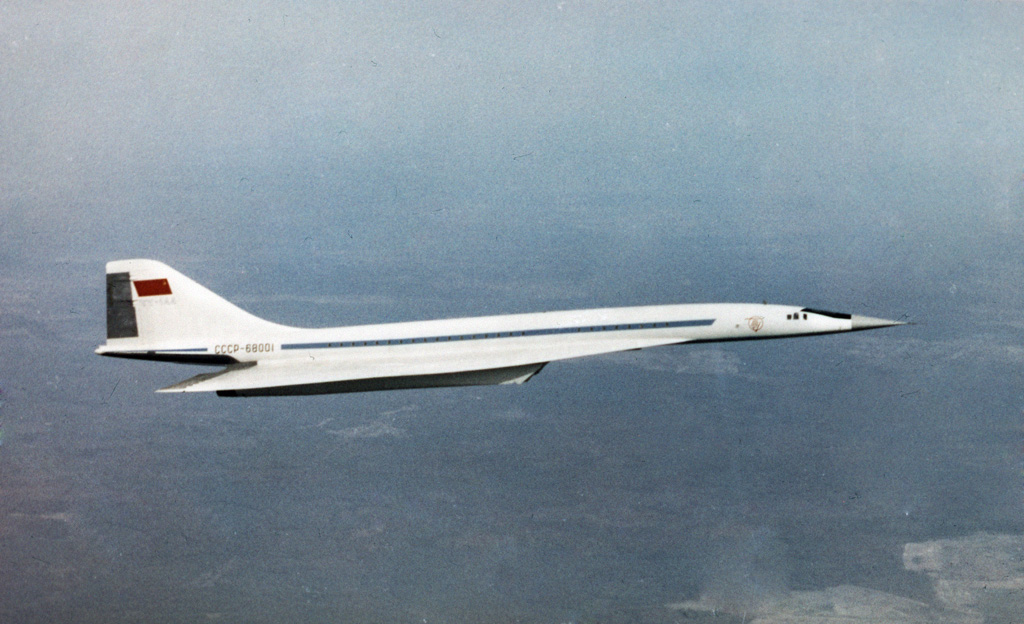The Concorde airliner may have halted its operation long back, but it continues to raise curiosity among aviation buffs.
G-BOAG, the last supersonic passenger jet to fly in the American sky, has been put on display at the Museum of Flight in Seattle, the World’s largest private air and space museum.
Located on the fringes of the Boeing Field / King County International Airport, the museum attracts more than 500,000 visitors annually.
The museum recently announced on Twitter that the aircraft is being sanded and prepared for a fresh coat of paint. G-BOAG is one of the 18 supersonic commercial jets that rest at various places across the globe.
We are sanding and prepping our Concorde for a new coat of paint! pic.twitter.com/wnAJqvA7XT
— The Museum of Flight (@museumofflight) June 24, 2021
On October 24, 2003, G-BOAG took off from New York’s John F. Kennedy Airport to London’s Heathrow with 100 passengers on board, marking its last commercial operation. Later, the aircraft flew back to New York and finally landed in Seattle.
Even on its last flight, flying from New York to Seattle, the aircraft made a speed record.
According to the museum, “on its retirement flight to the Museum of Flight on November 5th, 2003, ‘Alpha Golf’ set a New York City-to-Seattle speed record of 3 hours, 55 minutes and 2 seconds. Much of the flight was over northern Canada, where it flew supersonic for 1 hour, 34 minutes and 4 seconds”.
The Concorde Story
The development of supersonic commercial aircraft began in the late 1950s and the early 1960s. The Concorde was developed as part of a cooperation between Britain and France. The name ‘Concorde’ has the same meaning — ‘agreement’ — both in English and French.
The project saw the British and the French governments spending much more than the cost initially anticipated. According to Simple Flying, the two countries spent around $1.44 billion on the development of the aircraft. They intended to sell the aircraft eventually to major airliners in the world.

Jointly built by the British Aircraft Corporation (later came to be known as the BAE Systems) and the French company Sud Aviation (now Aerospatiale), the Concorde flew its first flight on March 2, 1969. After seven years, British Airways and Air France took over its operations.
At the time, the Concorde was regarded as a technological marvel because its aircraft could travel at a speed of 1,350 miles per hour and fly about 11 miles above the earth.
Other Competitors
The American aviation firms like Boeing and Lockheed Martin also worked on developing their own supersonic commercial aircraft, with the Boeing 2707 and the L-2000 of Lockheed Martin. America’s Cold War rival, Russia also developed its Tupolev Tu-144.
In the 1960s, the American initiative was backed by then-President John F. Kennedy. The Boeing 2707 also won the American SST competition, outdoing its rivals, Lockheed Martin and North American Aviation (NAA).
In an earlier report, The Eurasian Times mentioned that the American dream of supersonic planes never really took off. It saw constant obstacles in the form of budget cuts by the government, concerns regarding the environment, and also the lack of a market for such niche aircraft.
According to its initial plan, the Boeing 2707 was to fly at Mach 2.7 (2.7 times the speed of sound) and was required to be built entirely from stainless steel and titanium, which were difficult to work with during those years.

Further, during the time of its manufacturing, it was found that Boeing’s “swing-wing” design was faulty, and it was believed that the plane may not carry any payload. In 1968, a fixed-delta wing design was proposed, which was later scrapped because of the high cost of manufacture.
The Soviet Tu-144 was designed by the Tupolev Design Bureau, under Alexei Tupolev and was manufactured by the Voronezh Aircraft Production Association in Voronezh, Russia. The first flight took off in December 1968 and it went supersonic on June 5, 1969. By 1970, it achieved the feat of being the first commercial transport aircraft to fly at Mach 2.0.
On June 3, 1973, at the Paris Air Show, the Tupolev crashed while performing a steep climb maneuver. The crew had reportedly overstressed the airframe while pulling their plane from dive, resulting in the plane breaking in mid-air, killing all the 6 crew members on board and another 8 on the ground.
The aircraft was finally introduced for commercial flights in 1977. However, the next year, another Tu-144D, an improved version of the Tu-144 crashed on a test flight. It was later used to carry cargo and also took part on a few test flights for NASA for placing satellites in space.
Supersonic Transport Planes
Earlier this month, it was reported that research on supersonic transport planes is being funded by the US Air Force. United Airlines has reportedly placed an order for 15 supersonic commercial jets.
Apparently, the US military is looking for a viable replacement of the ‘Air Force Two’, a C-32A aircraft that carries the US Vice President, with a supersonic or hypersonic aircraft. It is already discussing such a possibility with various transport start-ups such as Boom Supersonic, Exosonic, and hypersonic start-up Hermeus Corporation.
Boom Supersonic is developing its supersonic airliner named ‘Overture’, which is expected to be delivered by 2026. United Airlines has also placed an order of 15 supersonic planes with the Boom Supersonic.
Introducing the United supersonic fleet.@United will purchase up to 50 Overture airliners and fly the fleet on 100% sustainable aviation fuels. https://t.co/zVG2aMCVKx #BoomSupersonic pic.twitter.com/kg9eoFT2Ww
— Boom Supersonic (@boomaero) June 3, 2021
With the US putting forward its plans of acquiring supersonic passenger aircraft, its rivals — Russia and China — may not be far behind.
Experts say that apart from transporting passengers at high speeds, supersonic technology may also be used in aircraft for intelligence, surveillance and reconnaissance (ISR) operations in the future.




